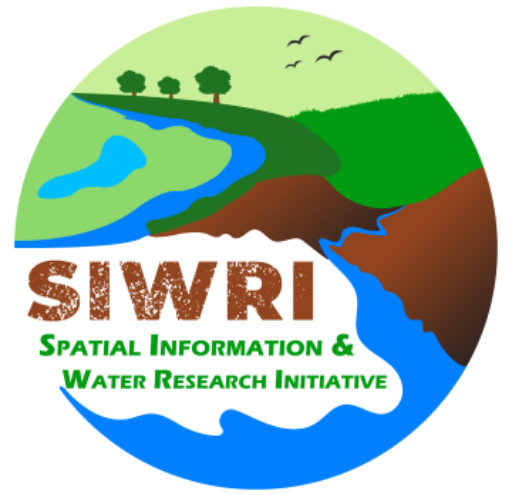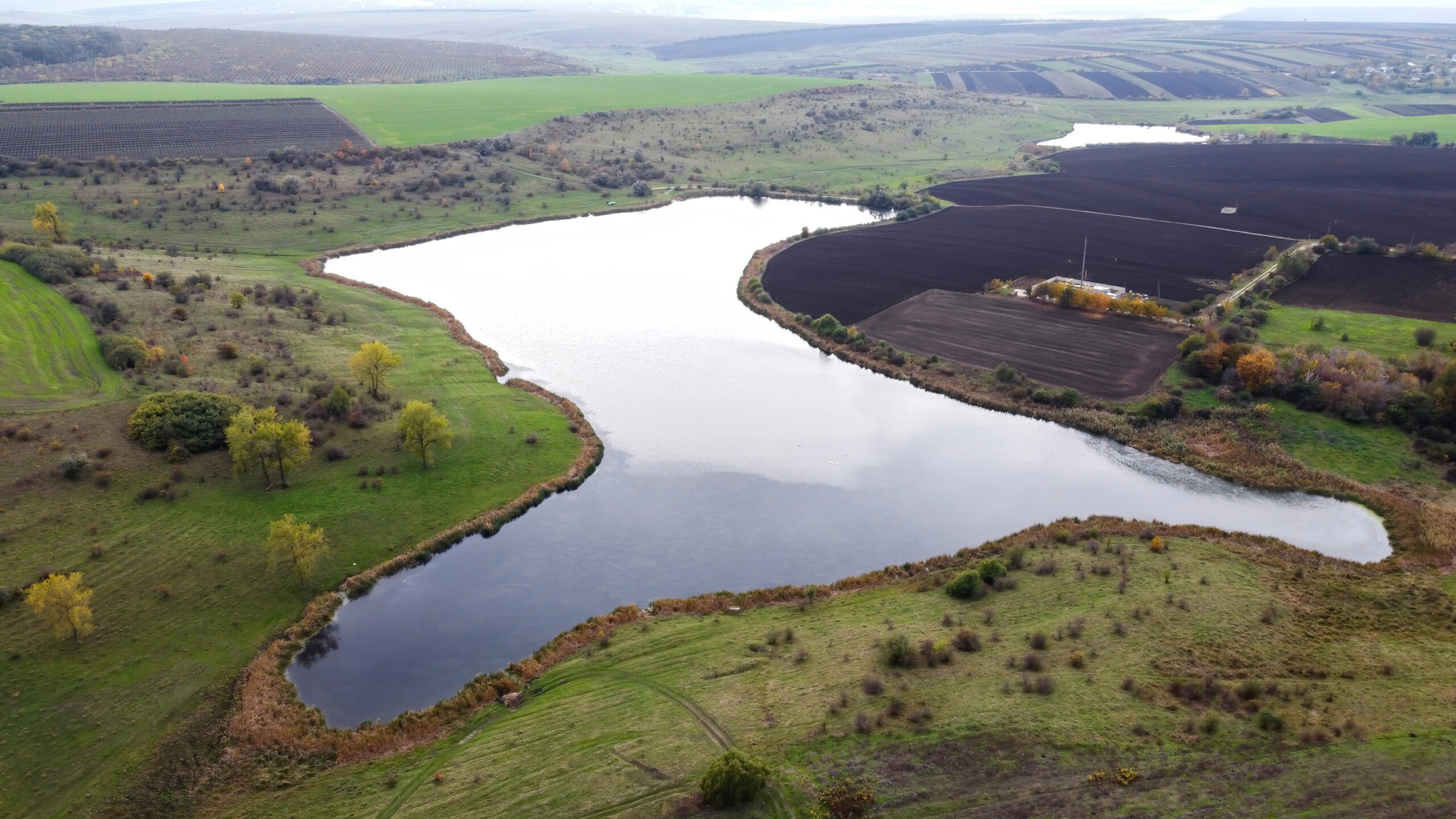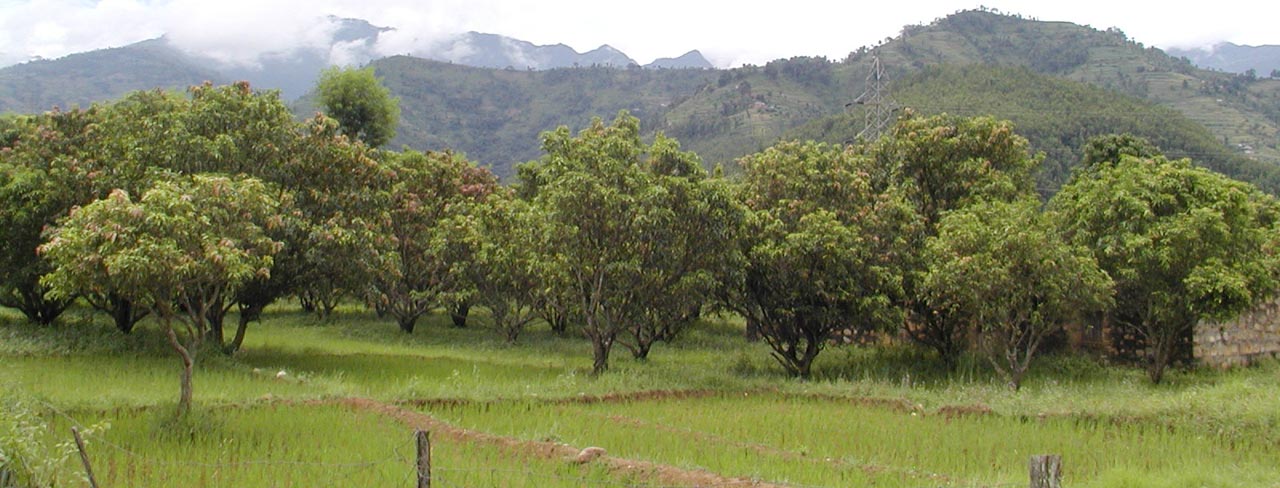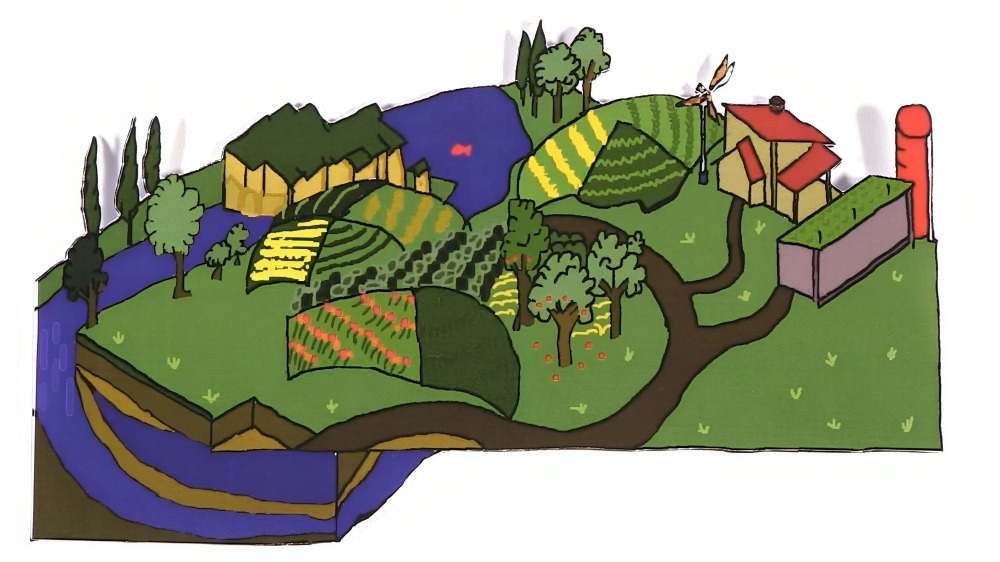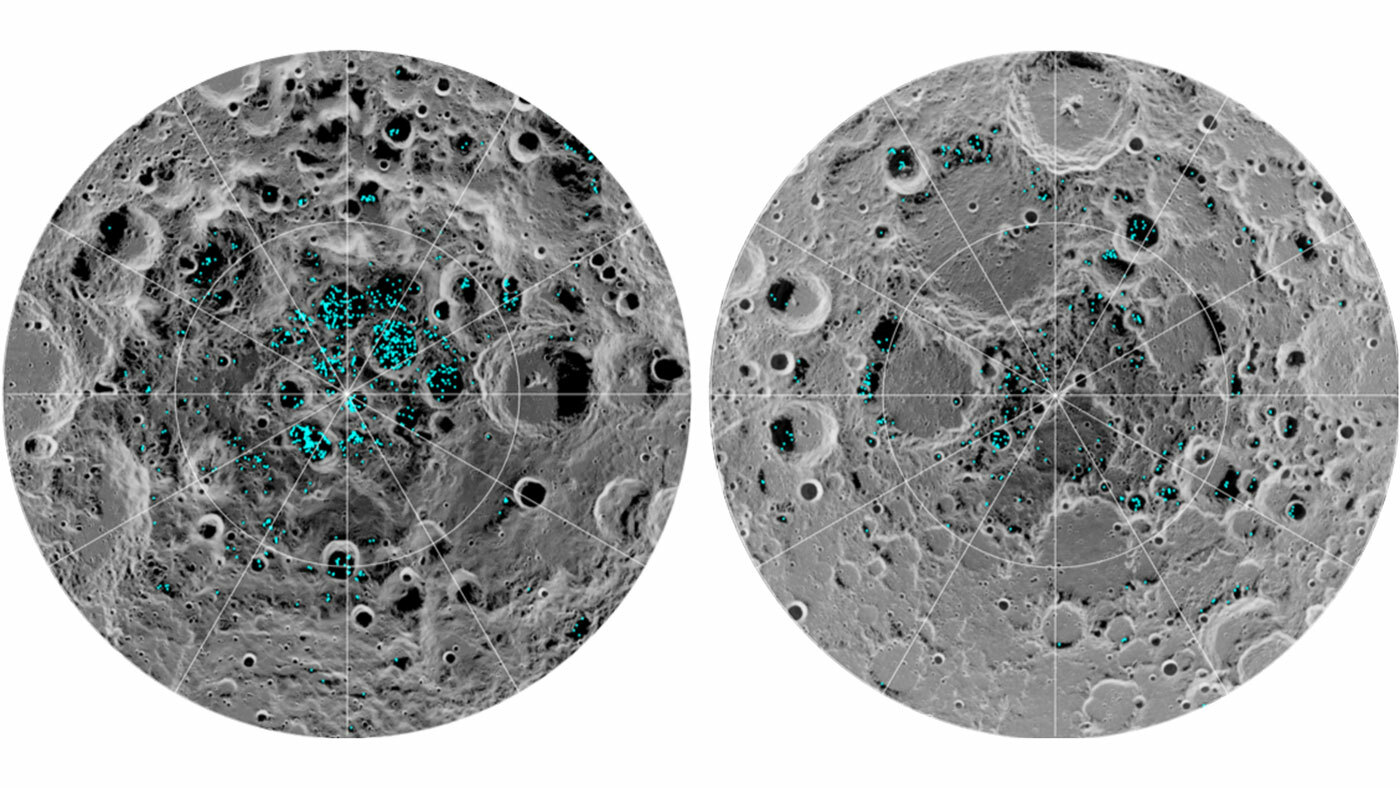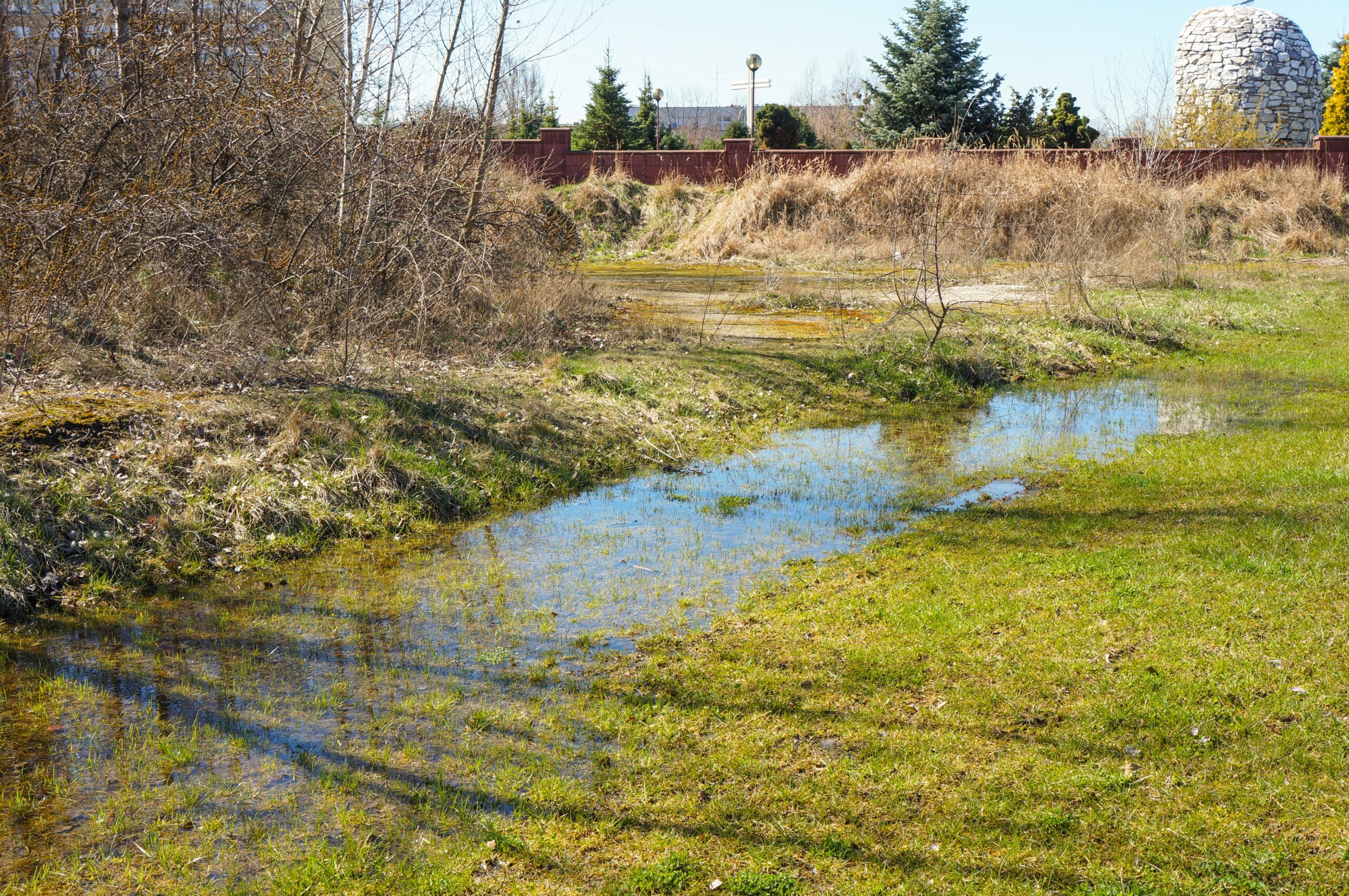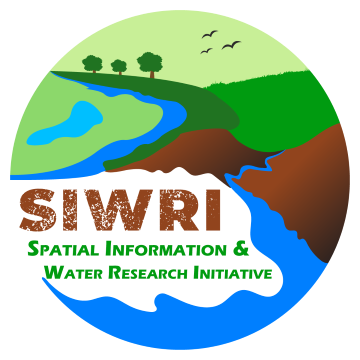Read about Aquifer Recharge methods and their importance in Groundwater Management
1. Factors Influencing Groundwater Recharge
2. The Natural Groundwater Recharge Process
3. Managed Aquifer Recharge (MAR): Artificial Process
4. Global Applications of Aquifer Recharge Methods
5. Local Water Supply Solutions
Introduction
Groundwater, a vital component of Earth’s hydrologic cycle, plays a crucial role in sustaining ecosystems and meeting the water needs of communities worldwide. The fraction of precipitation that becomes groundwater is intricately linked to soil characteristics and surface vegetation. In this article, we will explore the factors affecting groundwater recharge and discuss various methods, including Managed Aquifer Recharge, to enhance aquifer replenishment.
Factors Influencing Groundwater Recharge
Soil Erosion and Vegetation Cover Changes:
The rate at which precipitation infiltrates and recharges groundwater is heavily influenced by the health of the land. Alterations in landscape and vegetation cover can significantly impact the amount of water that infiltrates into the aquifer. When soil erosion occurs, rainwater runoff increases, reducing the rate of groundwater recharge. In contrast, thriving surface vegetation can enhance the groundwater replenishment process by promoting natural infiltration mechanisms.
The Natural Groundwater Recharge Process
Natural Infiltration Mechanisms:
As part of the hydrologic cycle, precipitation that falls on the land surface has the potential to infiltrate into the ground. Initially, it enters the soil-water belt, which is accessible to plant roots. Water not drawn by plants or evaporated follows the force of gravity and descends until it reaches the water table, becoming groundwater. Groundwater continually moves within and between aquifers, both naturally and artificially.
Below, we delve into commonly employed natural recharge methods that foster the replenishment of groundwater supplies.
1. Precipitation:
Rain and snowmelt are the primary sources of water for aquifer recharge. When precipitation falls on the ground, some of it runs off the surface and into rivers and streams. However, some of the water seeps into the ground and fills the spaces between soil particles. This water eventually makes its way down to the aquifer, where it can be stored for later use.
2. Surface water:
Water from rivers, lakes, and streams can also seep into the ground and recharge aquifers. This is especially common in areas with porous soils, such as sand and gravel. As the water seeps into the ground, it moves down through the soil until it reaches the aquifer.
3. Wetlands:
Wetlands are important for aquifer recharge because they help to filter and store water. Wetlands are areas of land that are saturated with water for at least part of the year. This water can come from precipitation, surface water, or groundwater. As the water flows through the wetland, it is filtered by the plants and soil. This helps to remove pollutants and sediments from the water. The water that is stored in wetlands can then slowly seep into the aquifer, where it can be used for drinking water, irrigation, and other purposes.
4. Permeable soils:
Aquifers are most likely to recharge in areas with permeable soils, such as sand and gravel. These soils allow water to flow through them easily. As the water flows through the soil, it fills the spaces between the soil particles and eventually makes its way down to the aquifer.
Managed Aquifer Recharge (MAR): Artificial Process
To bolster aquifer recharge intentionally, we employ artificial techniques known as Managed Aquifer Recharge (MAR). These methods can be categorized into several types:
- Surface Systems
- In-Channel Modifications
- Deep Systems
- Filtration Systems
- Rainfall and Sustainable Urban Drainage Systems
The choice of method or combination thereof depends on local conditions.
Click on the purple hotspots to learn more about the specific MAR methods
1. Surface Systems: Surface systems play a pivotal role in Managed Aquifer Recharge (MAR). They permit surface water to percolate directly into aquifers, particularly in regions with abundant surface water runoff, like floodplains and river deltas.
Spreading Basins: These large depressions are engineered to decelerate and distribute surface water flow, facilitating gradual infiltration into the ground. This approach mitigates erosion and flooding risks.
Infiltration Ponds: Similar to spreading basins, these ponds are often lined with impermeable materials to prevent groundwater contamination by keeping water from seeping into the soil.
Recharge Trenches: Narrow ditches dug for efficient water infiltration, typically used in sandy soil areas where water percolates swiftly.
2. In-Channel Modifications: In-channel modifications, like check dams and artificial recharge channels, redirect surface water into the aquifer to promote recharge. These are common in regions with low surface water runoff, such as arid areas.
Check Dams: Small dams constructed across streams and rivers to slow down and elevate water levels, allowing more water to infiltrate the ground and recharge the aquifer.
Artificial Recharge Channels: Man-made channels divert surface water flow into the aquifer, a valuable method in areas with sandy soils that facilitate rapid infiltration.
3. Deep Systems: Deep systems involve drilling wells into deep aquifers to inject water directly for replenishing groundwater, generally employed in areas with deep, extensive aquifers.
Injection Wells: Drilled into deep aquifers, these wells directly inject water into the ground, often used for recharging aquifers depleted due to over-pumping or drought.
4. Filtration Systems: Filtration systems, like sand filters and constructed wetlands, treat surface water before recharging it into aquifers, preventing the introduction of contaminants that could harm human health and the environment.
Sand Filters: Devices utilizing sand to filter out surface water contaminants.
Constructed Wetlands: Man-made wetlands employ plants and organisms to cleanse surface water of impurities before recharging it.
5. Rainfall and Sustainable Urban Drainage Systems: These systems, primarily employed in urban settings, capture and store rainwater for aquifer recharge, preventing wastage and flood-related issues.
Rainwater Harvesting: Collecting and storing rainwater for future use, often for irrigation, washing, and other non-potable purposes.
Sustainable Urban Drainage Systems: Designed to capture and store rainwater runoff, it can be gradually released into streams and rivers or used to recharge aquifers, averting flooding.
Managed Aquifer Recharge (MAR) stands as an impactful water management approach to combat water scarcity, enhance water quality, and safeguard the environment. In the face of continued climate change challenges, MAR is poised to play a progressively critical role in ensuring sustainable future water supplies.
Global Applications of Aquifer Recharge Methods
Australia and the United States, among other regions, employ aquifer recharge strategies to create a water buffer for use during dry seasons. These methods serve both non-potable and indirect potable water reuse purposes. In arid and semi-arid areas with high evaporation rates, subsurface storage of water emerges as a compelling alternative to surface storage.
In Europe, applications for drinking water supply and treatment heavily rely on aquifer recharge methods. These methods are widely employed to ensure a dependable and consistent drinking water supply while simultaneously enhancing water quality through natural treatment processes.
Arid and semi-arid regions face unique challenges due to high evaporation rates. In these regions, subsurface storage of water in shallow aquifers plays a vital role in maintaining a sustainable water supply. By storing water underground, it serves as a crucial water buffer, helping to mitigate the effects of water scarcity and ensuring a more reliable water source for communities in these areas.
Local Water Supply Solutions
Harnessing the upper meters of soil and shallow aquifers can provide valuable water buffers. Implementing cost-effective technologies like sand dams, keylines, contour bunds, check dams, and terraces, creates micro catchments that ensure a reliable local water supply. Moreover, these practices increase soil moisture and mitigate soil erosion.
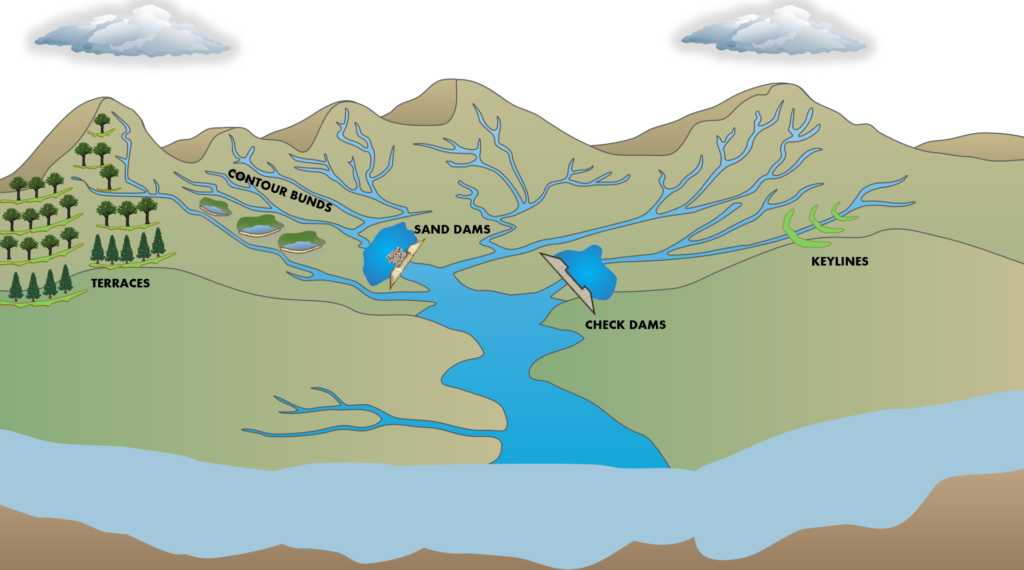
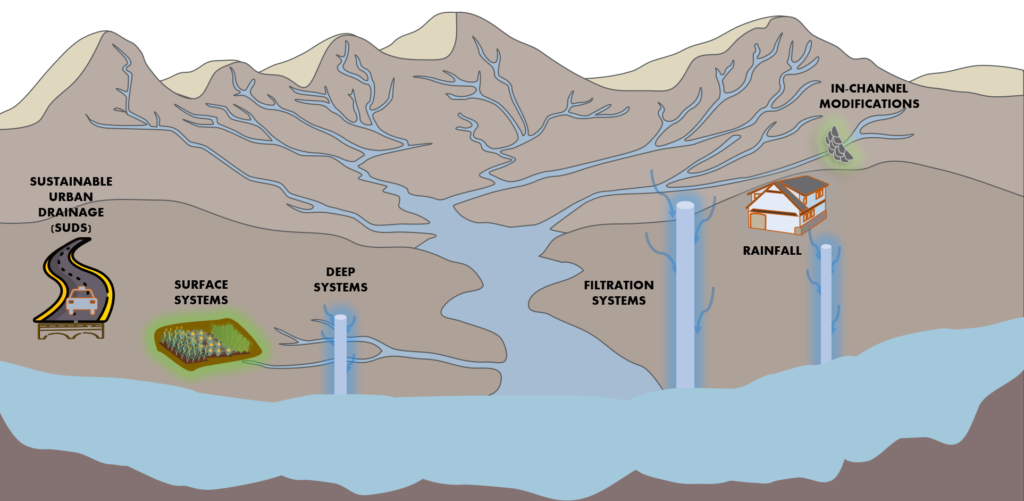
1. Sand Dams
Sand dams are a low-cost technique used to capture and store rainwater in areas with sandy riverbeds. They are constructed by building a dam across the riverbed, which allows water to infiltrate the sand and recharge aquifers. By trapping the water, sand dams provide a sustainable water source during dry periods and help to alleviate water scarcity in the region.
2. Keyline Systems
Keyline systems are an effective method for maximizing water retention and promoting aquifer recharge. This technique involves contour plowing and creating water furrows along the contour lines of the land. Contour plowing helps to prevent soil erosion by following the natural curves of the landscape. Water furrows are shallow channels dug along the contour lines, which help to capture and direct water to areas where it can infiltrate the soil. This increases the water-holding capacity of the land and promotes the replenishment of aquifers.
3. Contour Bunds or Ridges
Contour bunds or ridges are barriers constructed along contour lines on sloping land. They are designed to slow down the flow of water and increase infiltration, thereby promoting the recharge of aquifers. By constructing these barriers, water is trapped and allowed to infiltrate the soil, preventing erosion and maximizing water availability for plants and groundwater resources.
4. Check Dams
Check dams are small structures built across channels or watercourses to impound water. They are typically made using locally available materials such as rocks, logs, or soil. The main purpose of check dams is to slow down the flow of water, creating small ponds or reservoirs. This allows water to infiltrate the ground, replenishing aquifers and increasing the availability of water for vegetation and local communities. Check dams are effective in preventing soil erosion, retaining sediment, and improving water quality.
5. Terraces
Terraces are leveled steps or platforms constructed on sloping land. They are designed to reduce erosion, enhance water retention, and facilitate aquifer recharge. Terracing involves cutting into the slope to create flat areas, which are often reinforced with stones or other materials to prevent soil erosion. These flat areas help to slow down the flow of water, allowing it to infiltrate the soil and recharge aquifers. Terracing also helps to conserve moisture in the soil, making it beneficial for agriculture and overall water management.
These are just a few of the many low-cost techniques that can be used to improve water buffering and soil moisture. These techniques can be used to improve water availability and productivity in areas with limited rainfall, and they can also help to reduce erosion and improve soil health.
Conclusion
In conclusion, the careful management of groundwater recharge is essential to sustain water resources, support ecosystems, and address the water demands of growing populations. Understanding the relationship between soil, vegetation, and aquifer recharge is the first step in promoting sustainability. Managed Aquifer Recharge, coupled with local water supply solutions, ensures that we can meet our water needs while safeguarding the environment. By adopting these strategies, we pave the way for a future where water remains a plentiful and renewable resource.
References
- e-learning project of Hamburg University of Technology (TUHH) in cooperation with Hamburg Open Online University (HOOU)
- All the images used in this blog post are sourced from Rainwater Harvesting Landscape by Claudia Lasprilla Pina, Rahel Birhanu Kassaye and Ruth Schaldach is licensed under CC BY-SA 4.0
Related blog
-
Stormwater Drainage System: 7 Strategies to Prevent Storm Runoff and Protect Waterways
Have you ever wondered how the rainwater that runs off your property affects your local waterways? In Stormwater Drainage System, stormwater runoff can be a major contributor to water pollution, carrying harmful pollutants into rivers, lakes, and oceans.
-
Aquifer and Groundwater: Importance in Water Management
Aquifers are underground geological formations capable of storing and transmitting significant amounts of water. They play a crucial role in maintaining water availability, especially in areas where surface water may be limited or unreliable. Aquifer recharge refers to the process by which these underground water reservoirs are replenished naturally.
